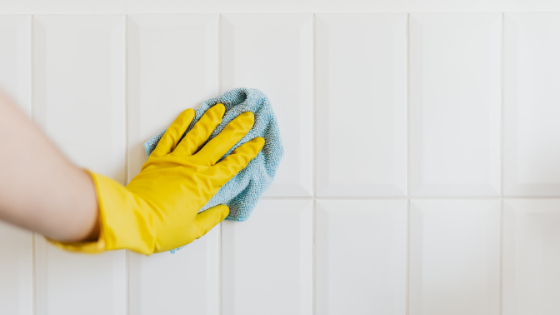
Have you ever been knocked on your butt by the fumes coming from the detergent and cleaning aisle of the grocery store? I have to hold my breath when walking through that section! Seems a bit odd that all those sealed containers are able to still give off such a strong smell. The VOCs (Volatile Organic Compounds) in these products are so strong that they can leach through the packaging of the cleaning supplies!
When you pick up these products to purchase, you’re taking those VOCs home with you where they will continue to off-gas.
In a 2018 study, data from over 6,000 people over 20 years was gathered to observe any links between household cleaning and respiratory health. The study showed that there was an association between decreased respiratory function and women who clean their homes often or those that work as cleaners. The decrease in respiratory function was similar to what has been found in individuals who have a pack-a-day smoking habit.
Yikes.
Thankfully, the low-toxin cleaning tread is gaining momentum and there are more products on the market that are much safer to use! Marketing is tricky though, so you need to be a savvy consumer when it comes to finding the right options for you and your family.
My favorite resource for finding safer cleaning products is the Environmental Working Group. Their Guide to Healthy Cleaning allows you to search over 2,500 cleaning products to review their safety rating. Products are rated A-F, with an A rating being the safest options. One thing you might be surprised by is that many products with claims of being safe and non-toxic can rate very poorly! Don’t be fooled by the marketing claims!
INGREDIENTS TO AVOID
While this is by no means an extensive list, here are some ingredients to avoid when shopping for your cleaning supplies.
Synthetic & Natural Fragrance – Fragrances are among the most dangerous ingredients in the beauty and cleaning industries. Unfortunately, fragrances are proprietary and companies do not have to disclose these ingredients. Don’t be fooled by the word “natural”. There are a lot of natural things in this world that are still not safe!
Petroleum Based Ingredients – These are ingredients with names that contain: phenol, benzene, toluene, glycol, and others ending in “ol” or “ene”. These are a byproduct of petroleum refining; like gasoline, kerosene, diesel fuel, etc.
Phenoxyethanol & Other Preservatives – Not all preservatives are bad. Some are absolutely necessary in order to keep things shelf stable. Some common preservatives like phenoxyethanol have been linked to endocrine disruption, skin irritation and are known neurotoxins.
1,4-Dioxane – A possible carcinogen, this is a byproduct of the manufacturing process that can be toxic to the brain, liver, respiratory and neurological system.
READY TO DITCH THE TOXIC STUFF?
I created Safer Swaps 101, a free mini-course, just for you! You’ll get bite sized lessons sent right to your inbox that will help you spot greenwashing (those tricky marketing claims), find safer clean products and safer personal care products, as well as resources for checking out the safety of the products you currently use! You’ll also receive a list of my favorite go-to products to make the search for safer even easier and a bonus personal session with me!
